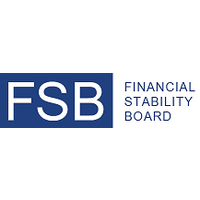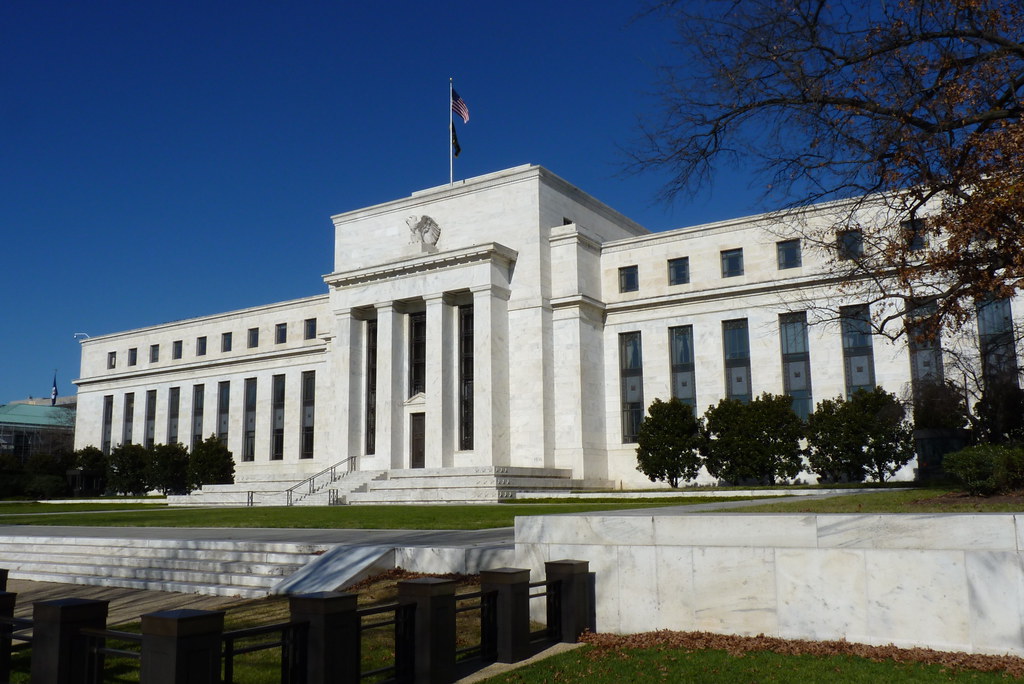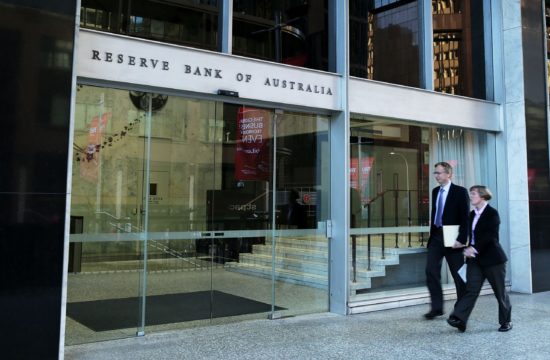Vice Chair for Supervision and Chair of the Financial Stability Board (FSB) Randal K. Quarles
At the Exchequer Club, Washington, D.C. (via webcast)
 Good afternoon ladies and gentlemen. I would like to thank the Exchequer Club for hosting this event, and I look forward to future events taking us back to the luncheon discussions at the Mayflower Hotel, as has been the club’s tradition now for over half a century.
Good afternoon ladies and gentlemen. I would like to thank the Exchequer Club for hosting this event, and I look forward to future events taking us back to the luncheon discussions at the Mayflower Hotel, as has been the club’s tradition now for over half a century.
This afternoon I will consider the challenges that the outbreak of the COVID-19 virus and, especially, the containment measures taken by many governments in response (which together I will call the “COVID event”) pose for the financial system and international cooperation on financial stability. I will do so in the context of a report that the Financial Stability Board—the FSB—published last week, evaluating the progress we have made in addressing the too-big-to-fail problem for banks. The evaluation has relevant and timely things to say about the resilience of banks, and the financial system more generally, during this time.
The COVID Event: An Unprecedented Policy Response to an Unprecedented Economic Shock
Let me start with the challenges posed by the COVID event for financial stability. The containment measures of the COVID event represent the biggest test that the financial system has faced since the global financial crisis of 2007-08. After years of reforms, we now face a real life stress test even more severe than those previously hypothesized. But unlike the global financial crisis, this shock originated from outside the financial system.
The first phase of the impact of the COVID event on the financial system was the market turmoil we experienced in March. This was the result of severe uncertainty triggering major re-pricing and volatility in global financial markets, disrupting the flow of credit to the economy. We saw many examples of a “dash for cash,” with firms drawing down their lines of credit with banks, and the indiscriminate sale of assets by investors in order to obtain liquidity.
The policy response by central banks and governments to this liquidity shock was rapid and decisive. The authorities worked together to address the problem through a combination of monetary, fiscal, and regulatory measures. These interventions led to rapid improvements in financial markets. Credit spreads have narrowed for both investment-grade and high-yield bonds, markets are functioning in an orderly manner, and credit provision to the economy has held up.
However, the COVID event is not behind us yet. Many households and businesses remain under pressure. According to the latest International Monetary Fund forecast, the global economy is projected to contract sharply by 4.9 percent in 2020, a much worse outcome than during the 2007–08 financial crisis. While some indicators suggest a rebound in activity, the path of recovery remains highly uncertain.
Banks entered the current crisis in a much stronger position than they did the global financial crisis. They are much better capitalized and more liquid than back in 2008. This is a direct outcome of the G20 regulatory reforms adopted in the aftermath of that crisis and measures taken by the banking industry, which have improved the resilience of the core of the financial system. This has allowed the banking system to absorb rather than amplify the current macroeconomic shock. It has also enabled banks to play a central role in measures to support the flow of credit to the economy. A number of stress tests carried out recently in FSB jurisdictions have confirmed that banks are able to continue lending even in the face of this extreme shock.
Less than two weeks ago, we at the Federal Reserve concluded that our banks would generally remain well capitalized under a range of extremely harsh hypothetical downside scenarios stemming from the COVID event. Even with that demonstrated strength, however—given the high levels of uncertainty—we took a number of prudent steps to help conserve the capital in the banking system.
We know that the financial system will face more challenges. The corporate sector entered the crisis with high levels of debt and has necessarily borrowed more during the event. And many households are facing bleak employment prospects. The next phase will inevitably involve an increase in non-performing loans and provisions as demand falls and some borrowers fail.
The official sector is providing a rapid and coordinated response to support the real economy, maintain financial stability, and minimize the risk of market fragmentation. The FSB is overseeing international cooperation and coordination of the responses of financial authorities to the COVID event.
Too-Big-to-Fail Reforms Have Made Banks More Resilient and Able to Support the Economy
This brings us to the FSB’s evaluation of too-big-to fail reforms. I should note at the outset that the analysis was conducted before the onset of the COVID event. Nevertheless, a number of its conclusions are relevant to policymakers and market participants in the current situation.
We should first cast our minds back to the global financial crisis. While the issue of “too big to fail” had occupied regulators and finance professionals for decades, it was in the 2008 crisis that the contours of the too-big-to-fail problem in a globalized world became clear. In 2010 Mervyn King, the then Governor the Bank of England, noted that “most large complex financial institutions are global—at least in life if not in death.” In this pithy sentence, he summed up the challenge policymakers faced.
Decades of bank expansion and cross-border integration had provided many economic and social benefits, such as the ability to finance global supply chains. However, the web of relationships and exposures had become complex and opaque. When big banks ran into trouble during the financial crisis, regulators faced a stark choice: disorderly failure or taxpayer-funded bailouts.
At the heart of the problems faced by authorities at the time were two issues:
- The problem before: The market had assumed that banks would not be allowed to fail. Banks and their creditors did not bear all the downside risk, and so they took on too much risk. This tendency—moral hazard—caused substantial economic distortions.
- The problem after: Authorities did not have the capacity to resolve a failing large international bank and were compelled to rescue banks at a significant cost to the taxpayer.
Drawing on the lessons from the crisis, the G20 Leaders endorsed a package of reforms to tackle these two problems for systemically important banks. This package comprised:
- Standards for additional loss absorbency through capital surcharges and total loss-absorbing capacity requirements;
- Recommendations for improved supervision; and
- Policies to put in place effective resolution regimes and resolution planning.
I mentioned earlier that banks have entered this crisis in a position of strength. Bank capital has increased significantly. For global systemically important banks—G‑SIBs—tier 1 capital ratios have doubled since 2011 to 14 percent. This is a combined a result both of the Basel III reforms agreed in 2010 and of independently improved decision-making at our large banks. But the too-big-to-fail evaluation also finds that the capital surcharges for systemically important banks have contributed to enhanced resilience. Moreover, banks in advanced economies have built up significant loss-absorbing and recapitalization capacity by issuing instruments that can bear losses in the event of resolution.
Supervisors and firms are better equipped to deal with problems that occur. Supervisory oversight of systemically important banks has learned the lessons of the crisis and has added a macroprudential perspective. The Basel III framework introduced additional capital and liquidity buffers, which are intended to be usable in a downturn to help maintain the flow of credit to the real economy.
Significant Progress in Making Banks Resolvable
Before the global financial crisis, the resolution of failing banks was a niche subject. In hindsight, most authorities around the world had given it far too little attention. This was the main reason why authorities had so few options for our global systemic banks in the middle of the crisis.
Things have changed, and for the better. Resolution authorities have sprung up or have been strengthened around the world. And resolution frameworks provide these authorities with the powers to resolve a systemically important bank in a manner that maintains financial stability and reduces taxpayer exposure.
The FSB’s evaluation shows that investors increasingly expect failing banks to be resolved rather than bailed out. The funding cost advantages enjoyed by systemically important banks have fallen. Market prices suggest that investors are now pricing the risk of having losses imposed on them in the event of a bank failure. For most jurisdictions that are home to G-SIBs, credit rating agencies no longer assume governments will bail them out.
Recovery and resolution planning has improved banks’ capabilities to produce timely, accurate and granular information. Timely information in a crisis is key to assessing the scale of a problem and to deciding what to do about it. This additional information has already proved helpful to both banks and authorities during the pandemic.
Taken together, these resilience and resolution reforms lower the probability of banks failing, reduce the consequences and costs of a bank failure, and provide additional options for dealing with failing banks that simply did not exist before the global financial crisis.
Reforms Are Achieving Their Policy Objectives But More Work Is Needed
We have to ask ourselves, however, whether we have addressed the problem set out by Mervyn King in the wake of the global financial crisis. Can authorities now resolve complex international banks without recourse to public funds, while maintaining financial stability? And does the coordinated international approach we have now adopted provide for effective resolution of banks, by ensuring that while they are global in life, we also have a global solution in death?
The FSB evaluation provides evidence that the reforms are indeed achieving their objectives. We are moving to a world in which G-SIBs can be global in life and orderly in death. We think that we are getting closer to a solution to the problem framed by Mervyn King. We have an internationally coordinated response grounded in national law. By pre-positioning loss-absorbing resources in life, and planning for an orderly resolution in the event of failure, we can provide the policymakers who come after us with more options than they had in the great financial crisis if they are faced with future systemic financial stress.
There is, of course, more to do. The benefits of reforms cannot be realized unless they are operationalized. All FSB jurisdictions need to implement resolution reforms and to improve their resolution capabilities so they are fully prepared to respond to a bank failure or a crisis.
The FSB’s evaluation shows that systemically important banks remain very complex, highlighting the importance of resolution planning. The evaluation also highlights gaps in the information available to public authorities and to the FSB and standard setters, which reduces their ability to monitor and evaluate the effectiveness of resolution regimes. The FSB continues its work to ensure that banks, other financial institutions and market infrastructures can be effectively and safely resolved. These are issues on which we will need to reflect and work further.
The financial landscape is also changing, and the FSB needs to be responsive. The FSB’s monitoring shows that the share of bank assets as a percentage of total financial assets has dropped from 46 percent in 2008 to 39 percent in 2018. As non-bank financial institutions increase their market share, risks have moved outside the banking system. The market turmoil in March underlines the need to better understand the risks in non-bank financial intermediation and reap the benefits of this dynamic part of the financial system without undermining financial stability.
There may be lessons for us to learn about the framework that we need to apply to this sector, which is different from—and less developed than—the one used for banks. At the FSB, we established earlier this year a balanced working group of bank and nonbank authorities to look closely and concretely at these issues, and the COVID event has given focus and vitality to this effort. Separately, we have already announced that our next evaluation will examine the post-crisis reforms to money market funds, which were once again front and center in the COVID event.
Finally, we want to hear from you. Our consultation closes on 30 September. We are keen to receive responses from a wide range of stakeholders. I would highlight the need for responses to be grounded in evidence. The FSB will take account of feedback to the consultation and publish a final report in early 2021. This will also provide us with additional evidence on how banks have responded to the pandemic and any lessons learned for our evaluation.
I look forward to your questions.














